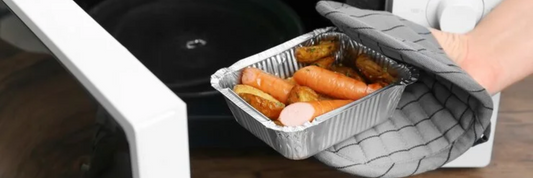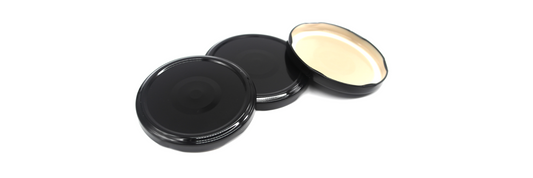Pickles, the tangy and crunchy delights, have been a cherished snack for centuries. Whether you prefer dill, bread and butter, or sweet gherkins, pickles are a versatile addition to any meal. But have you ever wondered what goes the packaging process? In this blog post, we will explore the world of pickle packaging, from suitable packaging options to advanced techniques like nitrogen flushing and vacuum packaging. So, grab a jar of your favorite pickles and let's dive in!
What Are Pickles?
Pickles are cucumbers that have been preserved through the process of fermentation or immersion in a mixture of vinegar, water, and spices. This timeless preservation technique gives pickles their distinctive flavor and extends their shelf life. Pickles can be enjoyed on their own, sliced in sandwiches, or served as a zesty accompaniment to various dishes.
- 7 reasons to choose glass jars for packing pickles
- Different Types of Pickles
- What Is The Difference Between Chutney And Pickle?

What Type of Food Packaging is Suitable For Pickles or Jam?
When it comes to packaging pickles or jam, there are several options to consider. The choice of packaging material plays a crucial role in preserving the flavor, texture, and shelf life of the pickles. Glass jars are a popular choice due to their transparency and ability to retain the pickles' flavors without imparting any unwanted taste. Additionally, glass jars are recyclable and eco-friendly, making them a sustainable packaging option.

However, plastic containers are also commonly used for pickle packaging because of their durability and lightweight nature. They are especially convenient for larger quantities of pickles, such as bulk packaging for commercial purposes. Plastic containers also offer cost-effective solutions without compromising the overall quality of the product.
What is The Difference Between Nitrogen Flushing and Vacuum Pickle Packaging?
Nitrogen flushing and vacuum pickle packaging are two advanced techniques used to prolong the shelf life of pickles and preserve their quality.
In nitrogen flushing, the oxygen from the packaging container is replaced with nitrogen gas. This process creates an oxygen-free environment, preventing the growth of bacteria and other microorganisms that could spoil the pickles. By removing oxygen, nitrogen flushing effectively extends the pickles' freshness and preserves their taste.
On the other hand, vacuum pickle packaging involves removing the air from the packaging container, creating a vacuum-sealed environment. This technique prevents the excess oxygen or moisture from damaging the pickles, ensuring their longevity and crispness. Vacuum packaging also helps in maintaining the pickles' color and texture, making them visually appealing to consumers.
Both nitrogen flushing and vacuum pickle packaging techniques are effective in preserving the quality of pickles, but the choice between the two depends on the specific requirements of the product and the desired shelf life.
What is The Best Shelf Life For Pickles After Packaging?
The shelf life of pickles after packaging largely depends on the packaging material and the preservation techniques employed. In general, properly packaged pickles can have a shelf life ranging from several months to a few years. However, it is important to note that the quality of pickles may deteriorate over time, even if they remain safe to consume.
For commercially packaged pickles, the manufacturers often provide a "best before" date on the packaging, indicating the recommended period for consuming the pickles while they are at their peak flavor and texture. It is advisable to consume the pickles within this timeframe for the best taste experience.
Proper storage conditions also play a vital role in maintaining the pickles' shelf life. Store pickles in a cool, dry place away from direct sunlight. Refrigeration can further enhance their shelf life and ensure their crispy texture.
How to Know if Melon Packaging Has Been Successful Or Not?
Determining the success of pickle packaging is crucial to maintaining the product's quality and ensuring customer satisfaction. There are several indicators that can help assess whether the packaging has been successful or not:
-
Seal integrity: Check if the lid or seal of the packaging is intact and tightly sealed. Any signs of tampering or leaking can indicate a compromised packaging that may have allowed air or contaminants to enter.
-
Appearance: Examine the pickles through the transparent packaging. They should retain their vibrant color, and there should be no signs of discoloration, mold, or spoilage.
-
Texture: The pickles should have a crisp texture and not feel excessively soft or mushy. A successful packaging will preserve the crunchiness that makes pickles enjoyable.
-
Aroma: Open the packaging and take a whiff. The pickles should have a characteristic aroma that indicates their freshness and quality. Any off-putting or foul odors may suggest spoilage or improper packaging.
By paying attention to these indicators, you can determine if the pickle packaging has been successful in preserving the quality of the product.
What is Quality Testing for Pickle Packing?
Quality testing is an essential step in the pickle packaging process to ensure that the final product meets the required standards. Several parameters are evaluated during quality testing:
-
Taste: Pickles are sampled to assess their flavor profile, ensuring they have the right balance of sweetness, tanginess, and spice. Taste testing plays a vital role in maintaining the authentic pickle experience.
-
Texture: Pickles are evaluated for their texture, examining factors such as crunchiness, firmness, and juiciness. Textural testing helps determine if the packaging has successfully preserved the desired pickle texture.
-
Visual inspection: The appearance of the pickles is examined, checking for color consistency, absence of mold or contaminants, and overall visual appeal. Any discrepancies can indicate issues with the packaging process.
-
Microbiological analysis: Samples of pickles undergo microbiological testing to ensure they meet regulatory requirements for microbial safety. This analysis helps verify that the packaging has effectively prevented the growth of harmful bacteria.
By conducting rigorous quality testing, pickle manufacturers ensure that their product meets the highest standards and provides a delightful experience to consumers.
What to Know About Pickle Packing?
Pickle packing is a crucial step in delivering high-quality pickles to the market. It involves a careful selection of packaging materials, utilization of advanced preservation techniques, and adherence to strict quality testing protocols. Successful pickle packaging not only extends the shelf life of pickles but also retains their flavors, textures, and overall appeal.
So the next time you indulge in a jar of pickles, take a moment to appreciate the thought and effort that goes into the packaging process. From traditional glass jars to modern nitrogen flushing and vacuum packing techniques, the best packaging for pickles ensures that these beloved snacks reach your pantry in their finest form, ready to enhance your culinary adventures.
Remember, the packaging is not just about the pickles but also a testament to the craftsmanship and dedication that goes into creating a truly satisfying snack.
Happy pickle munching!
"Pickle packaging is like a sturdy embrace that keeps the tangy treasures safe and sound."









